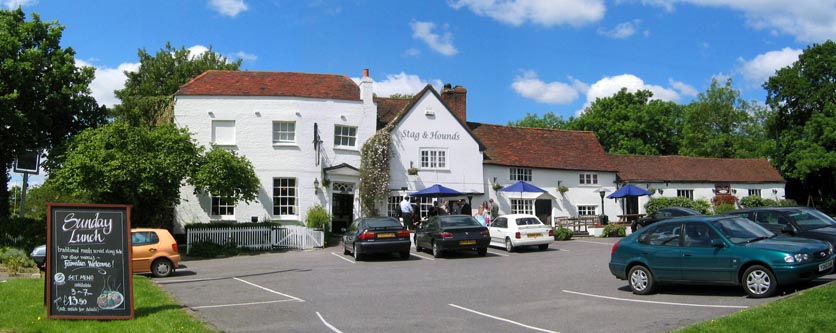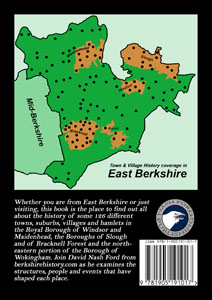 |
 |
||||||||
|
|
Binfield The Centre of Windsor Forest
The name Binfield derives from Bent Grass Field. The local hundred (like an ancient district council area) of Beynhurst has a similar derivation. Billingbear is the north-western portion of Binfield parish, although the park, near Shurlock Row, is over the border in Waltham St. Lawrence. The Luck of Binfield always hung in Binfield Place, a mostly Jacobean Manor (partly of Henry VII's reign) with a missing wing. It was a 17th century bas-relief of a lady's head, said to pour misfortune upon any owner who removes it. Is it still there? Binfield Manor was built in 1754, for Sir William Pitt (a distant cousin of Pitt the Elder, Earl of Chatham), at a cost of £36,000. In 1816, John Constable (the artist) stayed at the rectory on his honeymoon and twice sketched the church. All Saints Church is a mostly 15th century building with some interesting fittings. Of particular note is the 17th century hourglass and elaborate iron stand, featuring the arms of the Farriers' Company of London, which was used to ensure the rector’s sermons were not too long. The famous writer, Alexander Pope, lived at Pope's Manor in Popeswood and sang in the church choir as a boy in the early 1700s. On the east side of the village is the Stag and Hounds, Binfield’s most historic inn. Part of it is 14th century. It is said to have been a royal hunting lodge visited by King Henry VIII and Queen Elizabeth I. The latter supposedly used to sit at the window and watch the Maypole dancing on the green outside. Owing to its central position in Windsor Forest, the inn may originally have been the headquarters of the royal gamekeepers. It is, in fact, said to be at the exact centre of the old forest, as marked by the eight-hundred-year-old Centre Elm which once stood immediately outside. The sad hollow trunk of this once great tree – ravaged by Dutch Elm disease in the 1970s – remained for many years until inexplicably removed in 2003. Forest poachers are said to have cheekily hidden inside it in times gone by, as did a number of parliamentary soldiers during the Civil War. The lodge became a coaching inn in 1727. The 18th century travel writer, William Cobbett, once stayed there and wrote that it was “a very nice country inn,” while he called nearby Bracknell a “bleak and desolate” place. Read more history of
Binfield and other settlements in the parish in David Nash Ford's book, 'East Berkshire Town and Village
Histories'.
|
||||||||
| © Nash Ford Publishing 2001; Revised 2020. All Rights Reserved. | |||||||||





